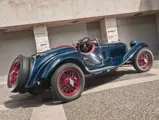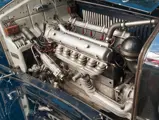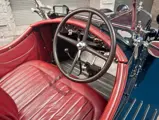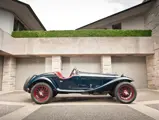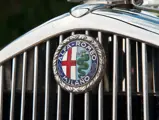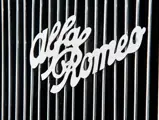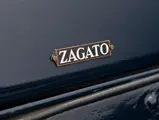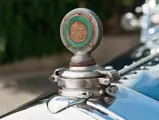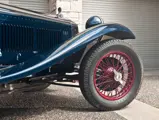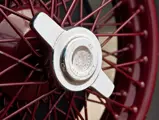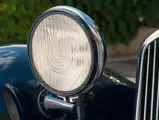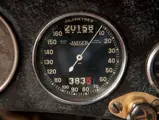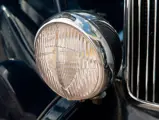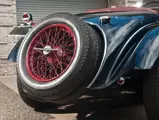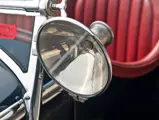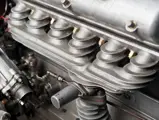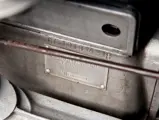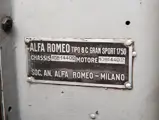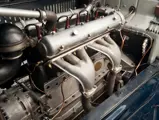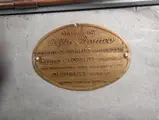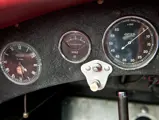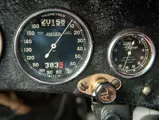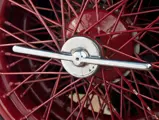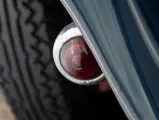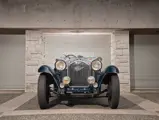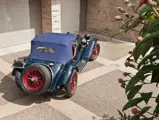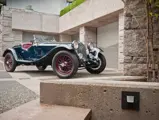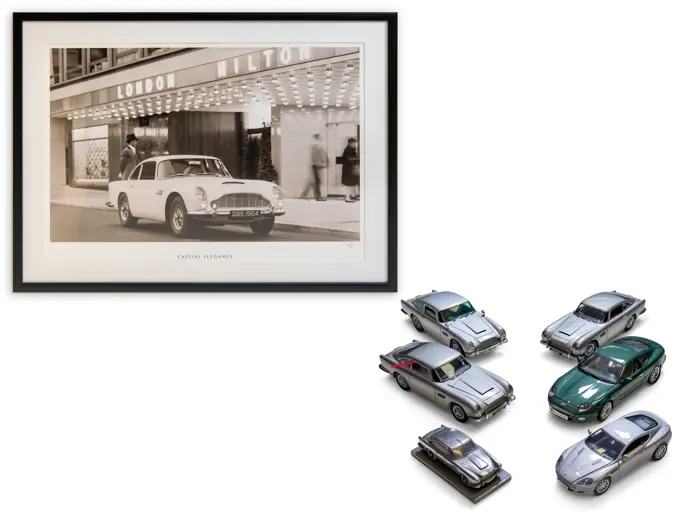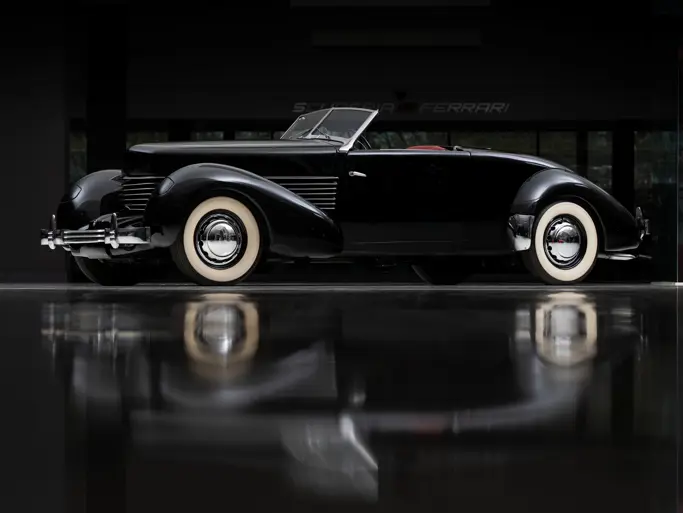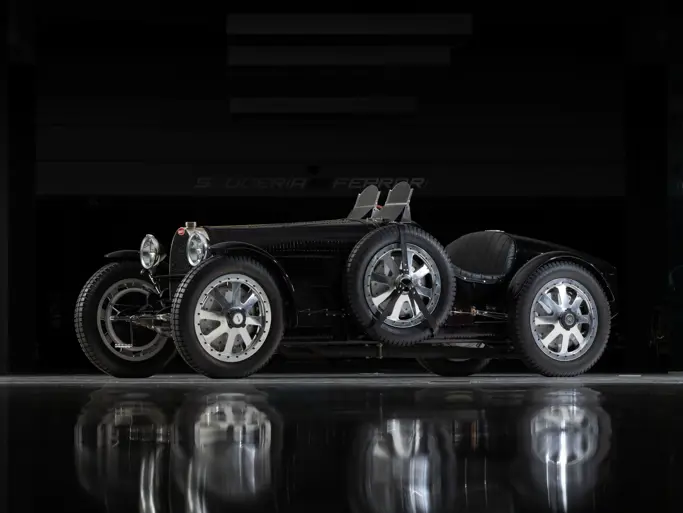Monterey 2011
1932 Alfa Romeo 6C 1750 GS 5th Series by Zagato
{{lr.item.text}}
$935,000 USD | Sold
 | Monterey, California
| Monterey, California
{{internetCurrentBid}}
{{internetTimeLeft}}

1,752 cc, DOHC inline six-cylinder engine, twin camshaft, Rootes-type supercharger, four-speed manual transmission, four-wheel mechanical drum brakes, est. 85 bhp, solid front and live rear axle with semi-elliptic leaf springs.
- Very attractive, original 5th Series Zagato aluminum coachwork
- Desirable and rare body-style produced with a fully-disappearing top and larger tail compartment
- Well documented history
- Mille Miglia, Colorado Grand, Pebble Beach and Villa d’Este eligibility
Alfa Romeo introduced the 1,752 cc six-cylinder powered cars designed by Vittorio Jano in 1929. Adept on both road and racing circuits, the powerplant proved reliable and powerful, offering impressive output from its relatively small displacement. Also benefiting from excellent handling, the car, in top, factory racing engine specification, could comfortably exceed 160 km/h.
The 6C 1750 is also notable in that it introduced the use of saloon bodies manufactured in-house by Alfa Romeo along with those produced by such firms as Touring, Castagna and Zagato, among others. Three models were available: the single overhead-cam Turismo with a 122-inch wheelbase and a maximum speed of about 115 km/h; the twin overhead-cam Gran Turismo with 108- or 114-inch wheelbase and a top speed of about 125 km/h; and the Gran Sport or Super Sport, a supercharged Gran Turismo producing 85 hp and a top speed of 150 km/h. Regardless of the version, the 6C 1750 remains one of the most compelling and desirable of all of Alfa Romeo’s models. All told, only 2,579 1750s were built through 1933.
Chassis 10814402
This car, chassis number 10814402, is a highly desirable 5th Series example with attractive coachwork by Carrozzeria Zagato. It is commonly agreed by marque experts that only a handful of these 5th Series examples were ever fitted with this unique coachwork, which features a fully disappearing top and a larger than standard compartment in the tail to provide better access to the limited luggage space. Built in 1932, the early history of this car is slightly uncertain, but it is known to have been owned by A.H. (Lex) Beals from Heemstede, Netherlands in the 1940s and was retained by him until 1949. According to a letter from the Alfa Romeo Register, the car later appeared in Belgium and was bought in 1952 by American William McMakin of Philadelphia, Pennsylvania. At the time of his purchase, the car’s original engine had been reduced to engine capacity of 1,500 cc and was un-supercharged. After participating in several minor racing events in the United States between 1952 and 1953, Mr. McMakin considered fitting a Ford V-8 into the car in order to increase its performance. He reconsidered, however, and instead purchased a 6C 1750 GTC engine through well-known Dutch dealer Bart Loyens. The engine that he purchased came from chassis 101014898; it is this car’s engine which remains in chassis 10814402 today.
Ultimately McMakin sold 10814402 as well as its original engine to Wesley Bergen who owned both for a brief period before selling them via John O’Donnell to Jackson Brooks. Mr. Brooks, a renowned Alfa Romeo collector and keen enthusiast, kept chassis 10814402 for nearly two decades. While still in possession of its original engine, it is reported that during the mid-1970s Mr. Brooks took it and fitted it into a 4th Series 6C1750 GS, chassis 8513088. Brooks had purchased this other car in fire-damaged condition from Bergen in 1974 with the intention of restoring the car, which he did by fitting reproduction Zagato coachwork. This car and engine still exist should a future owner intend on reuniting 10814402 with its original engine.
In 1976, 10814402 was purchased by Homer Tsakis of Katonah, New York, who kept the car for several years before deciding to participate in the 1984 Mille Miglia Storica. Following the completion of this historic and arduous event, the car was kept in Italy and treated to a light mechanical and cosmetic restoration.
Sadly, Mr. Tsakis passed away in 1991, and the car was subsequently purchased by Sultan Karim of Vancouver, British Columbia. With the intention of using it for rallies and tours, Mr. Karim treated the car to a professional engine rebuild and mechanical restoration in 1994. Later that year he participated in the California Mille Miglia, the BMW Classic Motor Rally and the Northwest Classic Rally in Oregon. In April 1995, Mr. Karim obtained FIA papers in order to participate in the Mille Miglia.
In early 2001 the car was sold by Mr. Karim to the present owner who immediately took pleasure in driving and using it around the mountainous roads in western Canada and the United States. The bodywork is reported to be in good condition with presentable older paintwork that does show some evidence of use. There are minor paint chips as well as some slight crackling to the paint in the trunk-lid area attributable to the car’s successful use in various driving events. Overall, the interior is in good order, and the seats are nicely patinated. All of the instruments and gauges are clear and function properly. The top works well, is in good cosmetic condition and has been repaired as necessary.
Mechanically the car is very strong, and the engine is reported to have a very lively uptake, revving freely. When shifting through the gears, the vendor maintains that it performs very well. This example has been well maintained and cared for throughout its life, and while the mechanical restoration is older, it has only been used lightly over the last several years and is reported to have performed well at all the local rallies in which it has participated.
Enthusiasts who have driven these prewar early Alfa Romeos are well aware that these are true “drivers’” cars. They are purposefully designed with detailed perfection of lightweight construction in both coachwork and engine capability. The balance between defined power and control which an Alfa 6C 1750 GS exemplifies invites the driver to push hard into corners and shift smoothly through the gears out of them. While they were produced in a wide range of coachwork designs, the two-seat Zagato Spyder is preferred by most connoisseurs of the marque and displays the highest regarded symmetry between sporting and touring design. Ugo Zagato, unlike Touring or other coachbuilders for Alfa Romeo, did not produce widely varying body styles, instead choosing to focus on perfecting the two-seat spider configuration by adjusting minor details. The 5th Series in particular is considered the pinnacle of 6C 1750 GS Zagato design; they are the most powerful of all the 1750s and certainly some of the rarest in production. In all just 106 are believed to have been produced in total, of which far fewer remain today. The 5th Series Zagato is even rarer, and to find an example such as this, which has its original coachwork and chassis still intact, is truly special.
“Of the fifty-odd 5th Series Gran Sport chassis still recorded, twenty three had (or still have) two-seater Zagato coachwork – and is without counting the “doubtful” and “fake” so-called Zagato bodies at present on record. One of the penalties of a good design becoming fashionable is that some people will always try to reproduce it for re-sale at an advantageously raised price.” A. Cherrett, Alfa Romeo 6C, page 90.
Supercharged Zagato-bodied 6C 1750 GSs are among the greatest prewar sports cars in the collector car market. Light, nimble and prodigiously quick, they are a sheer delight to drive and continue to be formidable competitors in the world’s greatest historic driving events. The offering of chassis 10814402 presents the rare opportunity to acquire just such an example.


